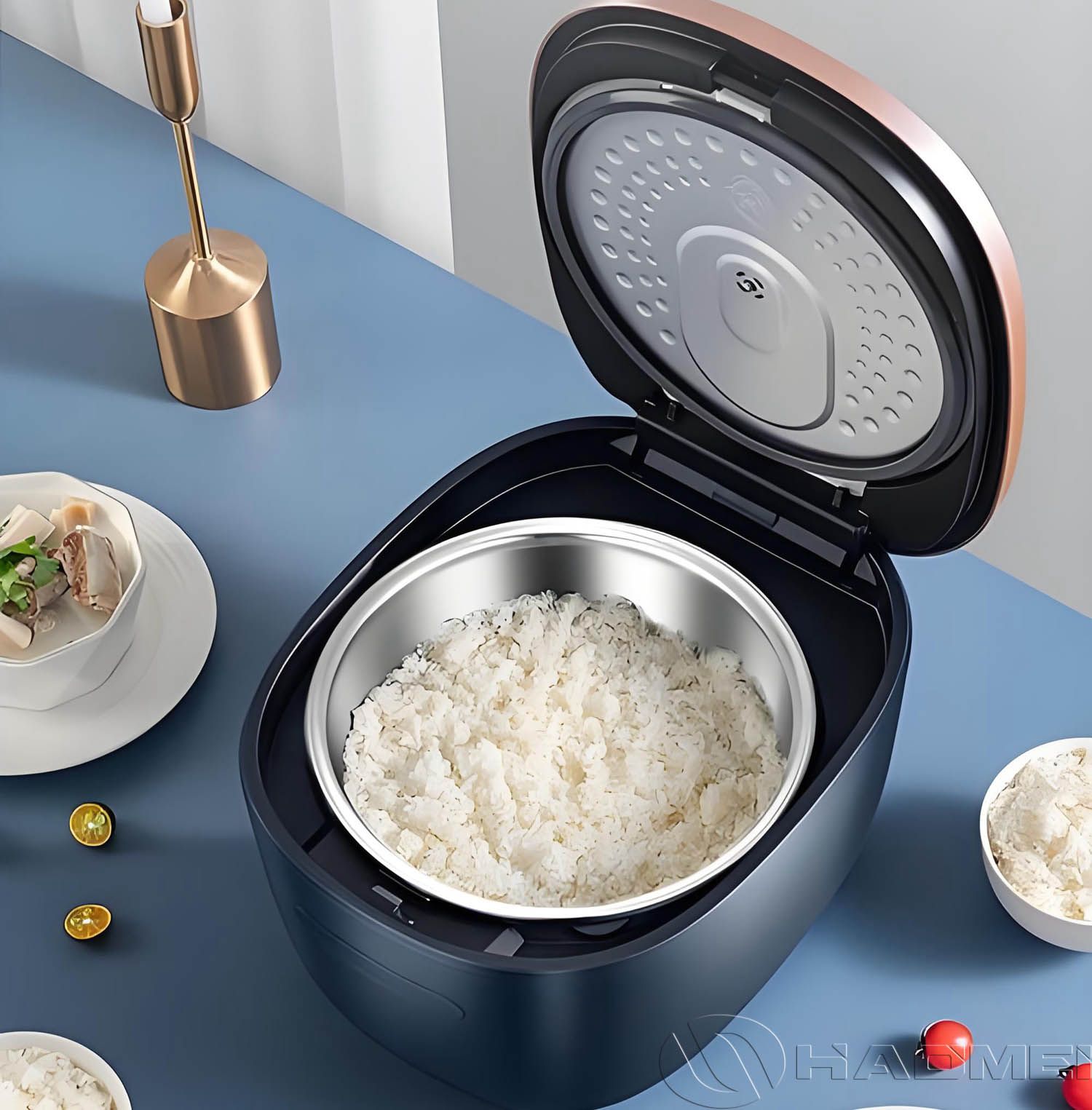
 No.14 Waihuan Road, CBD, Zhengzhou, China
No.14 Waihuan Road, CBD, Zhengzhou, China
 +86-18703635966
+86-18703635966

 No.14 Waihuan Road, CBD, Zhengzhou, China
No.14 Waihuan Road, CBD, Zhengzhou, China
 +86-18703635966
+86-18703635966
The main materials used to make rice cooker inner pots are currently: aluminum, stainless steel, multi-layer composite materials, and ceramic (purple clay). Aluminum, in particular, offers uniform heat conduction, is easy to shape, and is aesthetically pleasing. It can be combined with other metals or alloys, making it the primary material for mid-range cookware.
The aluminum sheets used for the inner pot are mostly 3003 aluminum discs. 3003 aluminum alloy is a widely used rust-resistant aluminum. Its main alloying element is manganese (Mn), with a content typically between 1.0% and 1.5%.
Higher Strength:
Compared with pure aluminum grades (1060, 1100), 3003 offers greater strength and better mechanical properties, making it less prone to deformation during processing and daily use.
Good Corrosion Resistance:
The manganese-rich microstructure improves resistance to corrosion from steam, water, and mildly acidic or alkaline food environments.
Excellent Workability:
3003 maintains aluminum's good ductility, deep-drawing performance, and machinability-ideal for rice cooker inner pots that require multiple stamping, forming, and shaping steps.
3003 aluminum discs are round blanks produced by processing aluminum coils through stamping, annealing, and other processes. They are ideal raw materials for manufacturing deep-drawing cookware such as rice cooker inner pots, pressure cookers, and non-stick pans.
Conditions and Common Grades:
3003-O (annealed state) is a commonly used state for deep drawing and forming, exhibiting excellent ductility.
3003-H14 / H18 and other work-hardened states are used in applications requiring higher strength.

1. Outstanding Deep Drawing & Stretching Performance
3003-O has high ductility and low yield strength, allowing it to form complex pot bodies, curved surfaces, and small-radius shapes without cracking.
2. Excellent Corrosion Resistance
The natural oxide film and the manganese alloy matrix ensure long-term stability against steam, water, and rice starch residue.
3. Cost-Effective and Efficient for Mass Production
Compared with high-end alloys, 3003 is inexpensive, easy to process, and yields high product efficiency-perfect for OEM manufacturing.
4. Good Thermal Conductivity
Aluminum offers excellent heat transfer, ensuring even heating and improved cooking performance.
5. Safe for Food-Contact Applications
After anodizing or applying food-grade non-stick coatings, 3003 aluminum meets international food-contact safety requirements.
| Alloy | 3003 |
| Temper | O, H14, H18 |
| Thickness | 0.5-6.0 mm |
| Diameter | 100-1500 mm |
| Surface Treatment | anodizing, coating, brushing |
| Production Method | CC / DC |
| Applications | non-stick cookware, pizza pans, pressure cooker bases, soup pots, kitchenware |
| Packaging | wooden pallets + moisture-proof plastic film |
| MOQ | 1-3 tons |
Besides the base material, the surface treatment of the rice cooker inner pot determines the user experience and safety:
Anodizing (Hard/Conventional)
Functions: Improves wear resistance, enhances surface adhesion, provides a good base for subsequent coatings; strengthens corrosion resistance.
Thickness: Commonly 5-20 μm; hard anodizing can reach 25-100 μm (for high wear resistance requirements).
Non-stick Coating (PTFE/PFOA-Free Formula)
Market Mainstream: Multi-layer polymer coating (primer + intermediate layer + topcoat), requiring good adhesion, high temperature resistance, and no harmful residues.
Performance Requirements: High temperature resistance, wear resistance, non-toxic, and food contact certification (such as FDA/EU standards, depending on the sales region).
Frosted or Anodized + Colored Coating
Advantages: Customizable appearance, easy to clean, and the anodized layer improves coating adhesion.

3003 vs 5052
Strength: 5052 has higher strength and a higher yield strength than 3003, making it suitable for designs requiring greater rigidity.
Formability: 3003-O has slightly better ductility than 5052-O, making it easier to deep draw.
Corrosion Resistance: Both have good corrosion resistance, but 5052 performs better in marine or chlorinated environments.
Cost: 5052 is generally more expensive than 3003.
3003 vs Stainless Steel (SUS304)
Thermal Conductivity: Aluminum is superior to stainless steel, offering better heat uniformity; stainless steel has stronger scratch resistance and surface strength.
Weight: Aluminum is lighter, reducing overall weight and improving portability and packaging costs.
Cost: Depends on thickness and surface treatment; aluminum is generally more economical for thinner parts.
As manufacturers, we must answer this question scientifically and objectively: using high-quality 3003 aluminum discs as the inner liner material is very safe and meets international food-grade standards.
All qualified aluminum alloy inner liners undergo hard anodizing or are coated with a food-grade non-stick coating (such as PTFE, ceramic glaze, etc.). This dense protective film completely isolates the aluminum substrate from food, physically preventing the release of aluminum ions.
Furthermore, the 3003 aluminum discs must meet numerous stringent domestic and international standards, such as China's National Food Safety Standards and the U.S. Food and Drug Administration standards.
Copyright © 2025 By HAOMEI Aluminum CO., LTD. All Rights Reserved. Sitemap